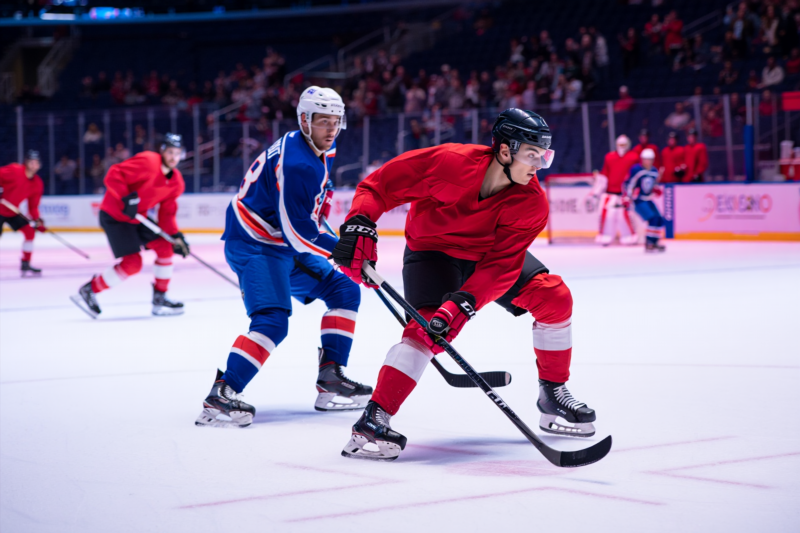
Hockey Strategy Choosing Between Offensive and Defensive Tactics
Unlock Your Team’s Potential by Mastering Offensive and Defensive Systems
When it comes to hockey, strategy isn’t a one-size-fits-all approach. Success on the ice hinges on how well your team understands, adopts, and adapts offensive and defensive tactics. Whether you’re a coach, player, or dedicated fan seeking to deepen your understanding, knowing how to choose the best system can transform your gameplay, boost performance, and lead to more victories.
In this comprehensive guide, we’ll explore the fundamental differences between offensive and defensive strategies, provide insights on selecting the best tactics for your team, and explain how to balance these systems to maximize success on the ice.
Understanding Offensive and Defensive Systems in Hockey
Offensive Systems: Creating Scoring Opportunities
Offensive systems are designed to generate scoring chances and maintain pressure on the opponent’s goal. These tactics focus on movement, puck control, and exploiting weaknesses in the opponent’s defense.
Common offensive strategies include:
- Cycle Plays: Maintaining puck possession in the offensive zone through continuous passes and movement.
- Forechecking: Applying pressure high in the opponent’s zone to retrieve the puck quickly.
- Set Plays and Breakouts: Structured plays to bypass defenders and create clear scoring opportunities.
Key objectives of offensive tactics:
- Break down tight defensive formations.
- Increase shot volume and quality.
- Create scoring chaos to outmaneuver goalies.
Defensive Systems: Protecting Your Net
Defensive strategies aim to limit opponent chances and regain puck control. They often require discipline, positioning, and quick reactions.
Popular defensive approaches include:
- Man-to-Man Defense: Marking each opponent individually to prevent free movement.
- Zone Defense: Covering designated areas to block passing lanes and shooters.
- Collapse Defense: Compressing the defensive zone to protect the net during critical moments.
Main goals of defensive tactics:
- Minimize scoring opportunities.
- Force turnovers and transition quickly into counter-attacks.
- Maintain organization under pressure.
How to Choose the Optimal Tactics for Your Team
Selecting between offensive and defensive systems—or finding the right balance—depends on several factors:
1. Assess Your Team’s Strengths and Weaknesses
| Strengths | Weaknesses | Tactical Implication |
| Skilled skaters | Weak in physical defense | Emphasize offensive push and quick puck movement |
| Strong physical presence | Struggle with speed | Focus on tight defensive positioning |
Expert Tip: Conduct a SWOT analysis of your team before choosing tactics. Capitalize on strengths and mitigate weaknesses with strategic planning.
2. Consider Your Opponent’s Style of Play
| Opponent Play Style | Counter Strategy | Recommended Approach |
| Aggressive forecheck | Tight zone defense with quick transitions | Maintain composure and clear zone effectively |
| Defensive bunker | Use controlled offensive systems like overloads | Maintain puck possession and stretched passing |
Expert Tip: Adaptability is key. Effective teams switch between offensive and defensive tactics based on real-time scenarios.
3. Match System to Game Context and Scoreline
- Leading: Shift towards a defensive system to protect the lead.
- Trailing: Adopt a more aggressive offensive approach to create scoring chances.
4. Practice Both Systems for Flexibility
A versatile team mastering both offensive and defensive tactics can respond dynamically to changing game situations, giving you a strategic advantage.
Strategies to Balance Offense and Defense
Success isn’t about choosing one tactic over the other; it’s about harmonizing both systems seamlessly:
- Transition Play: Swiftly switching from offense to defense and vice versa.
- Structured Flexibility: Training players to recognize when to switch tactics.
- Special Teams: Power play versus penalty kill strategies tailored to your team’s strengths.
Final Thoughts: Make Informed Strategic Decisions
Choosing the right hockey tactics differences offense and defense can determine the outcome of each game. By understanding your team’s capabilities, analyzing the opposition, and remaining flexible, you position yourself for consistent success.
Remember: The best teams are those that strike the perfect balance—embracing offensive opportunities while maintaining solid defensive resilience.
Frequently Asked Questions (FAQs)
How do I decide when to switch from defense to offense?
Timing is crucial. Look for opportunities during turnovers or regain puck control. Coaches often instruct players to recognize when the opponent is out of position or vulnerable to fast counterattacks.
Is it better to focus on offense or defense?
It depends on your team’s strengths, the game situation, and the opponent’s tactics. A well-rounded team effectively balances both systems.
Can a team excel with only offensive or only defensive tactics?
While some teams lean predominantly on one system, versatility generally offers a competitive edge. Specialization can work in certain scenarios but limits adaptability.
Mastering hockey strategy by understanding the nuances of offensive and defensive tactics is essential for elevating your team’s performance. Whether you’re planning your game plan for an upcoming match or developing your team’s playing style, the key lies in intelligent selection, adaptive application, and continuous practice.
Unlock your team’s potential today by embracing this comprehensive approach—live and breathe the game of hockey with confidence!
Ready to elevate your hockey tactics? Dive into our expert training advice, drills, and gear reviews to give your team the competitive edge. Explore more and turn strategy into victory!